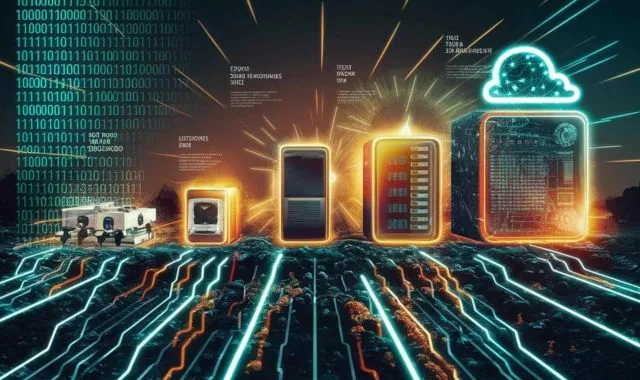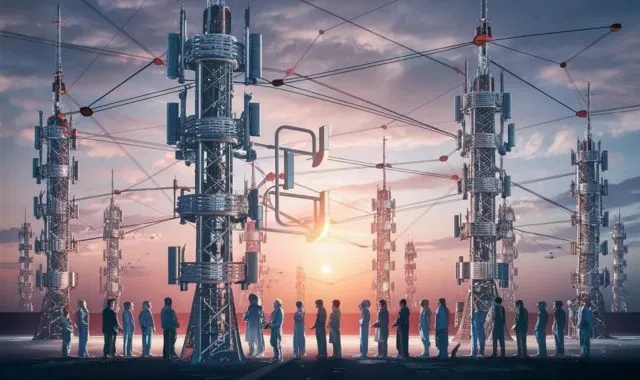Physical Address
304 North Cardinal St.
Dorchester Center, MA 02124
Physical Address
304 North Cardinal St.
Dorchester Center, MA 02124

Network technology connects devices and allows them to share resources. It uses physical cables and wireless signals, with routers and switches directing traffic. Wired networks offer stability, while Wi-Fi provides convenience. Firewalls and encryption safeguard your data. The future holds faster speeds with 5G and a surge of connected devices with the Internet of Things.

Have you ever stopped to think about the intricate dance that happens behind the scenes when you click a link or stream a video? It’s all thanks to the magic of network technology! This article dives deep into the world of networks, unveiling their components, types, and the invisible forces that keep our digital world connected.
Network technology refers to the infrastructure and protocols that enable devices to communicate and share resources. It’s like a complex highway system for data, allowing information to flow seamlessly between computers, phones, and countless other devices.
Networks can be broken down into two key components:
The tangible infrastructure that forms the physical connections between devices. Think wires, cables, and fiber optic lines.
The software-defined rules that govern how data travels on the physical network. These rules determine how devices identify each other and communicate effectively.
the roads and bridges are the physical network, while traffic signs and lanes represent the logical network, ensuring smooth and organized traffic flow.
Networks come in various flavors, each catering to specific needs:
The traditional workhorse, offering stability and high speeds.
Connect devices within a limited area, like your home or office.
Span vast geographical distances, like connecting offices across different cities.
The most common wireless technology, offering internet access within a specific range.
Enable mobile devices to connect to the internet almost anywhere with cellular coverage.
Facilitates short-range communication between devices for tasks like sharing files or using wireless headphones.

Network functionality relies on dedicated hardware:
The central nervous system, directing data traffic between different networks, ensuring it reaches the right destination.
Efficiently manage data flow within a network, learning the location of connected devices and sending data directly to them.
Act as gateways to wireless networks, allowing devices to connect and exchange data wirelessly.
Securing your network is paramount:
The first line of defense, acting as a filter that monitors incoming and outgoing traffic, blocking potential threats.
Scrambles data using complex algorithms, making it unreadable to anyone without the decryption key, protecting sensitive information.
The future of networks is brimming with exciting possibilities:
Ushers in an era of unprecedented speeds, enabling faster downloads, streaming, and real-time applications.
A world where everyday objects are connected, requiring robust and secure networks to manage communication and data exchange.
Automates network management, optimizing performance, predicting issues, and enhancing security.
The world of networks extends beyond the core concepts. Let’s explore some additional aspects:
Measured by factors like speed, latency (delay), and bandwidth (data transmission capacity). Optimizing these factors ensures a smooth user experience.
Standardized communication languages that define how devices format and transmit data. Common protocols include TCP/IP, which forms the backbone of the internet.
The art of identifying and resolving network issues. From diagnosing slow connections to fixing connectivity problems, troubleshooting keeps your network running optimally.
Creates virtual networks on top of physical infrastructure, allowing for more efficient resource allocation and increased flexibility.
Leverages cloud computing to deliver network services on-demand, offering scalability and cost-effectiveness for businesses.

The world relies on a complex dance of data to function, and understanding network technology is the key to appreciating this hidden magic. This article has equipped you with the fundamentals of networks, from wired connections to the future of 5G. Remember, the journey doesn’t end here! Keep exploring, and you’ll become a master navigator of the digital world, empowered by the ever-evolving power of networks.
Here are some frequently asked questions to complement the main article on network technology:
The internet is a massive global network of interconnected computer networks. While a network can be private and connect devices within a specific location (like your home or office), the internet is a public network that allows devices worldwide to communicate.
Slow connection speeds, dropped connections, difficulty accessing websites, and issues with wireless connectivity are some frequent network problems.
Yes, in most cases. A modem acts as a bridge between your network and the internet service provider (ISP), while a router directs traffic within your network and connects devices to the internet.
Both switches and hubs connect devices on a network. However, switches are more intelligent and can send data directly to the intended recipient, while hubs simply broadcast data to all connected devices.
Here are some tips: * Use strong passwords and enable encryption on your network. * Install a firewall and keep your devices’ software up to date. * Be cautious when clicking on links or opening attachments from unknown sources.
A Virtual Private Network (VPN) encrypts your internet traffic and tunnels it through a remote server, providing an extra layer of security and privacy when using public Wi-Fi.
5G offers significantly faster data speeds compared to previous generations, enabling faster downloads, uploads, and improved performance for applications like streaming and video conferencing.
The Internet of Things connects everyday devices to the internet, creating a vast network of devices that communicate and exchange data. This will require robust and secure networks to handle the increased traffic and data demands.